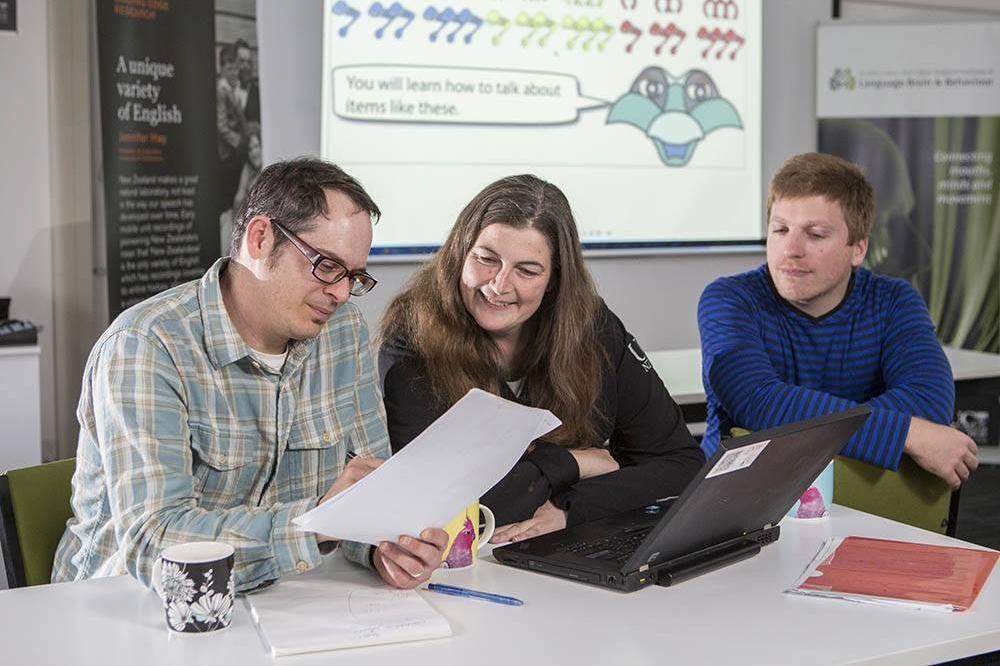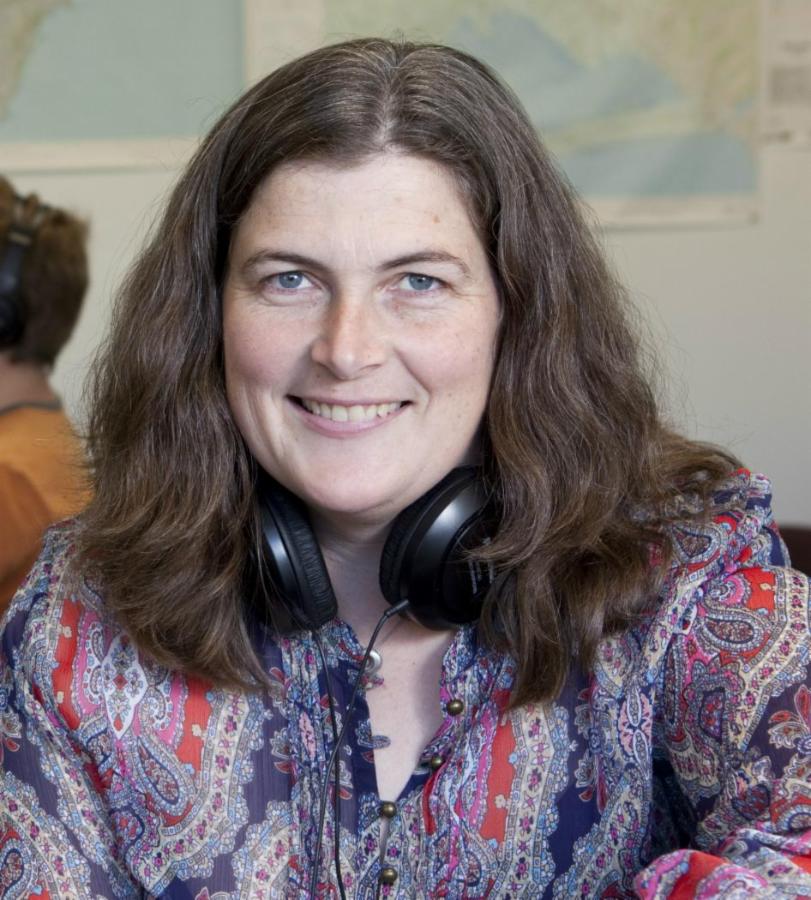The availability of ONZE corpora make it possible to study the entire history of individual variables in NZE. A large number of sociolinguistics variables have been studied by researchers in the ONZE lab.
- The short front vowel shift, including FLEECE
- Vowel mergers
- Linking and intrusive /r/
- Phrase-final /t/
- Morphosyntactic variation
- Regional variation - Darfield
- Maori English
As part of the work on variation and change in NZE we are interested in how the speech perception mechanism functions in the face of such variation, This has led to a series of perception experiments.
- NEAR/SQUARE merger
- DRESS/TRAP
- KIT
The short front vowel shift, including FLEECE
New Zealand English is well-known amongst sociolinguists for its front short vowel shift – resulting in high realizations of the TRAP and DRESS vowel, and a central realization of KIT. The high TRAP and DRESS often lead to miscommunication with speakers of Northern Hemisphere varieties of English, and the central KIT vowel is one of the main features that sets NZE aside from Australian English.
Work from the ONZE project shows that the initial stages of this push-shift began in very early NZE, with speakers born in the 19th C, already raising their TRAP and DRESS vowels. The main period for KIT centralisation was the early 20th Century. DRESS continues to rise today, and now overlaps in F1/F2 space with FLEECE. FLEECE has begun to diphthongize in reaction.
Vowel Mergers
We are very interested in a number of vowel mergers occuring in NZE, and these have been studied in the ONZE corpora, in real-time production studies, and using perception experiments
Linking and intrusive /r/
Linking /r/ is an /r/ which is present in spelling, and which can be pronounced across word or affix boundaries when the following sound is a vowel. Examples of linking /r/ include “more apples”, “car engine”, “fearing” and “honourable”. Intrusive /r/ occurs in similar positions, but is not present in spelling. Examples include “law/r/and order”, “ma/r/and pa” and “draw/r/ing”.
Intrusive /r/ evolved later than linking /r/, but it is currently believed that they are now the same thing. In New Zealand English, a new vowel is also now attracting intrusive /r/, as in plough/r/ing, and now/r/and then.
Phrase-final /t/
The visit of Gerry Docherty to ONZE in 2006 sparked an interest in the behaviour of /t/ in NZE, and we began a collaborative project which, in the first instance, looks at variation in phrase final /t/.
Morphosyntactic variation
While the biggest focus of ONZE is on phonetic variation, we have also looked at some morphosyntactic variation, and we expect this focus to increase in the next few years, with a new collaboration between Joan Bresnan and Jen Hay. Morphosyntactic variables which have been studied include agreement in existentials, the prefix ‘un’, the dative alternation, preterites and possesive ‘have (got)’.
Regional variation - Darfield
Despite the fact that ONZE holds over 1000 hours of spoken NZE, this is not sufficiently varied to study the question of whether there are emerging regional variants in NZE. A project was conducted which aims to investigate the development of regional variation in NZE.
A large-scale, in-depth survey of the Canterbury region was surveyed by collecting and documenting rural and urban vernacular data firstly in the Darfield area. Data collection has taken place where a local farmer used her personal network to fill a sample of 20 locally born and raised speakers. This sample will be equally stratified by gender and age, straddling two age groups: 19-30 and 45-60. To give a better view of the current linguistic situation, the sample is to be extended by a further 10 speakers (5 men, 5 women) in the 70-85 age bracket.
Hour-long interviews are conducted, in which participants are encouraged to tell stories about themselves and their experiences in the area. This is a well-established method in sociolinguistics, allowing the researcher to tap into more vernacular styles of speech . At the end of the interview the participants read the standard word-list from the Origins of New Zealand English project.
Maori English
Jeanette King and Margaret Maclagan are leading this project which also involves the related MAONZE project.
NEAR/SQUARE merger
Despite the fact that young NZers claim they can’t hear the difference between the vowels in NEAR and SQUARE, our experiments show that they are actually quite good at identifying which variant is being produced. By associating NEAR/SQUARE tokens with photos of different speakers, we have shown that listeners are much more accurate at the task when they think they are listening to someone who is expected to make the difference (i.e. an older speaker, or an upper-class speaker). Further experiments have revealed that listeners’ ability to distinguish between these vowels is affected by their recent exposure, either to speakers of different dialects, or to lexical items associated with particular dialects.
DRESS/TRAP
Kate Drager's MA thesis synthesized a continuum from TRAP to DRESS, and showed that where a listener places a boundary along this continuum depends, among other things, on the perceived social characteristics of the speaker.
KIT
Following work by Nancy Niedzielski, we have been asking participants to listen to natural speech, and then match particular vowel tokens to points on a synthesized continuum. Our results for KIT show that participants hear a more “Australian” KIT vowel if “Australian” is written at the top of the answer-sheet, and a more “NZ” KIT vowel, if “New Zealander” is written at the top of the answer-sheet. Surprisingly, this result was robust despite the fact that our participants reported they all knew they were listening to a New Zealander.
To test the idea that mere exposure to the concept of Australianism could affect speech perception, we re-ran the experiment with a stuffed kangaroo in the room in one condition, and a stuffed kiwi in the other. This produced similar results. We have also tried exposing participants to ‘good ‘ and ‘bad’ facts about Australia, and find that these conditions shift perception to different degrees.


